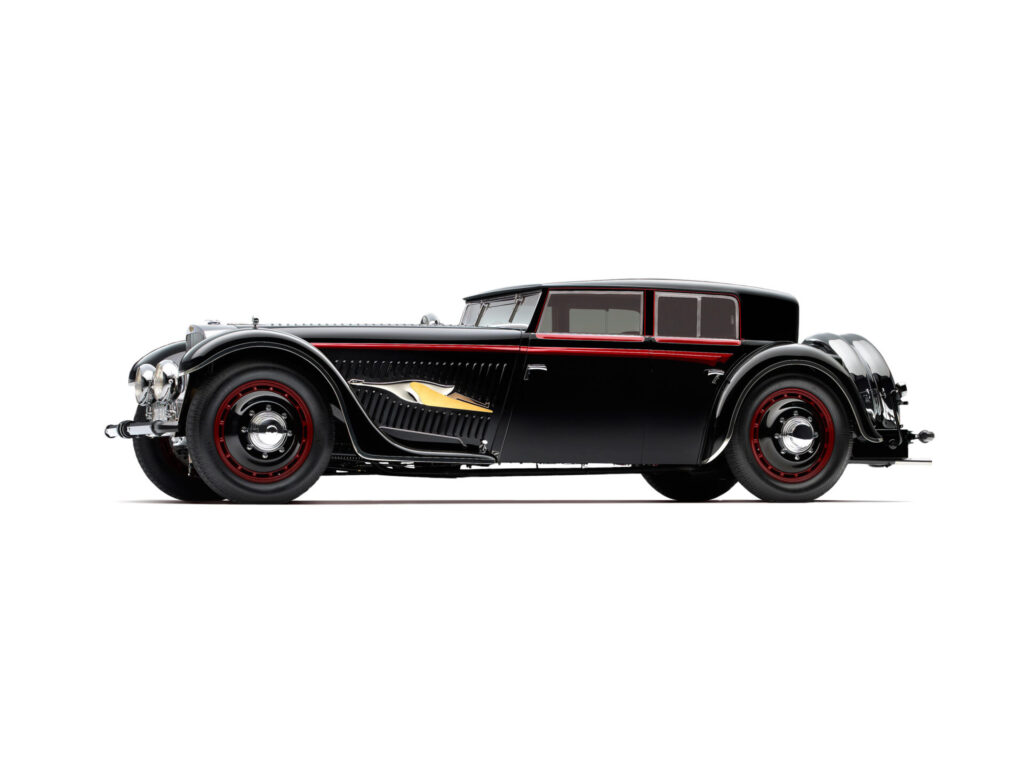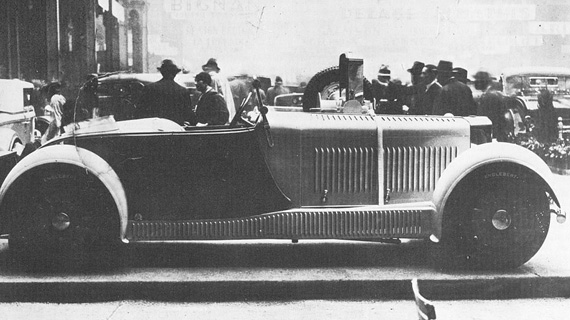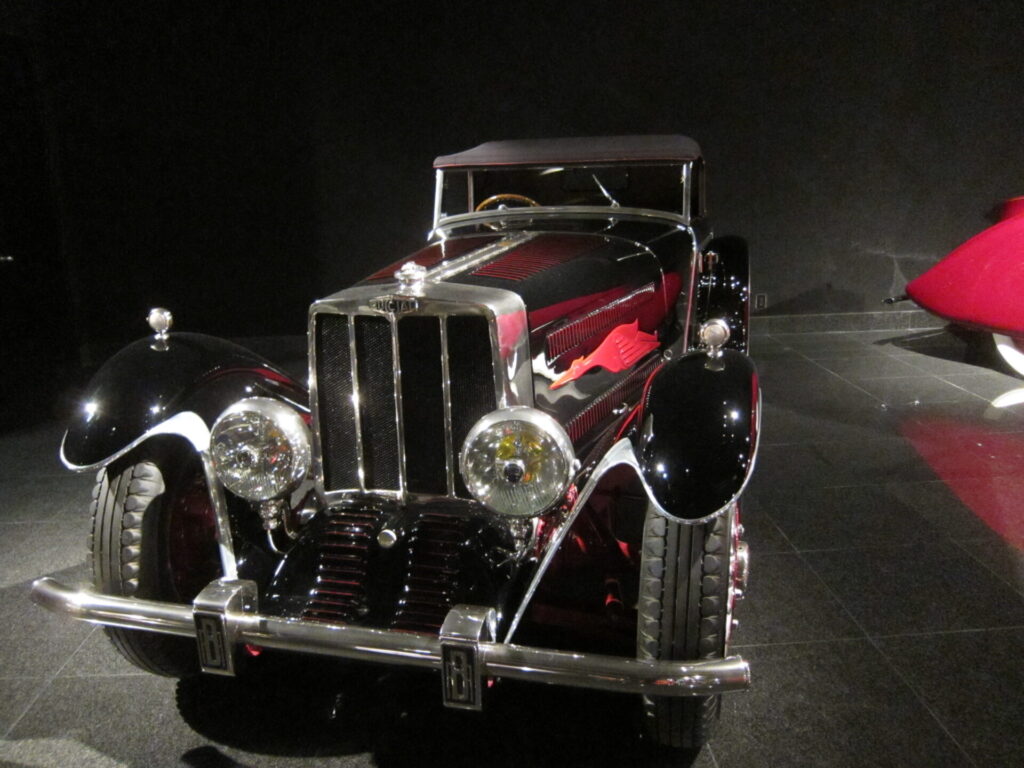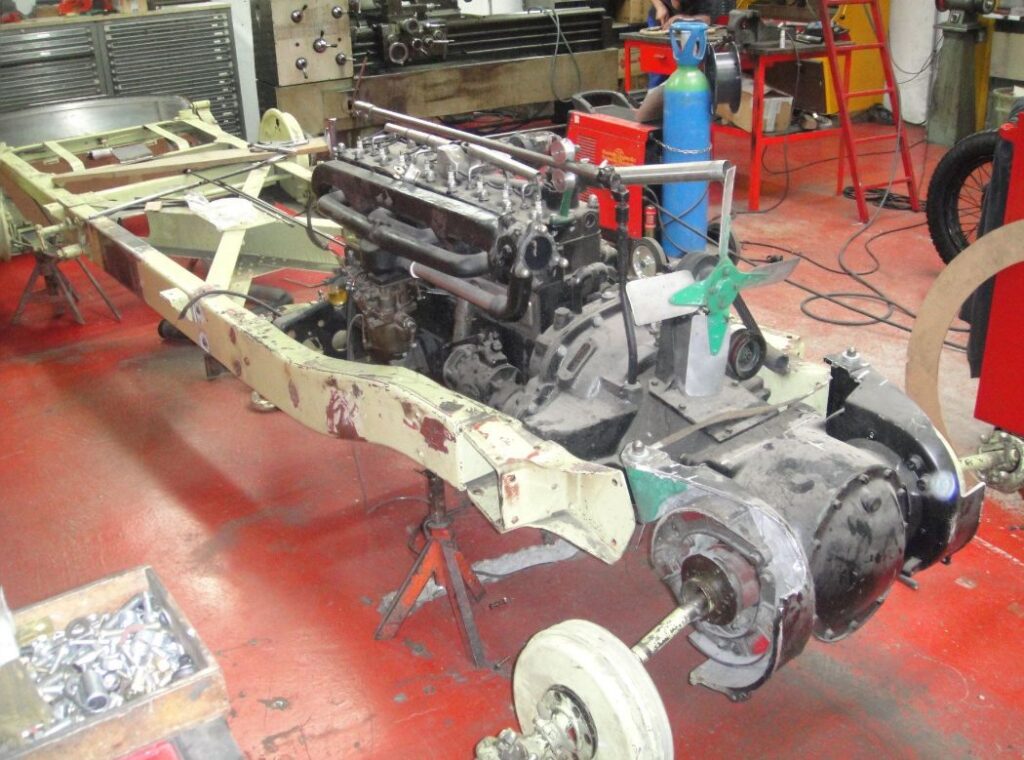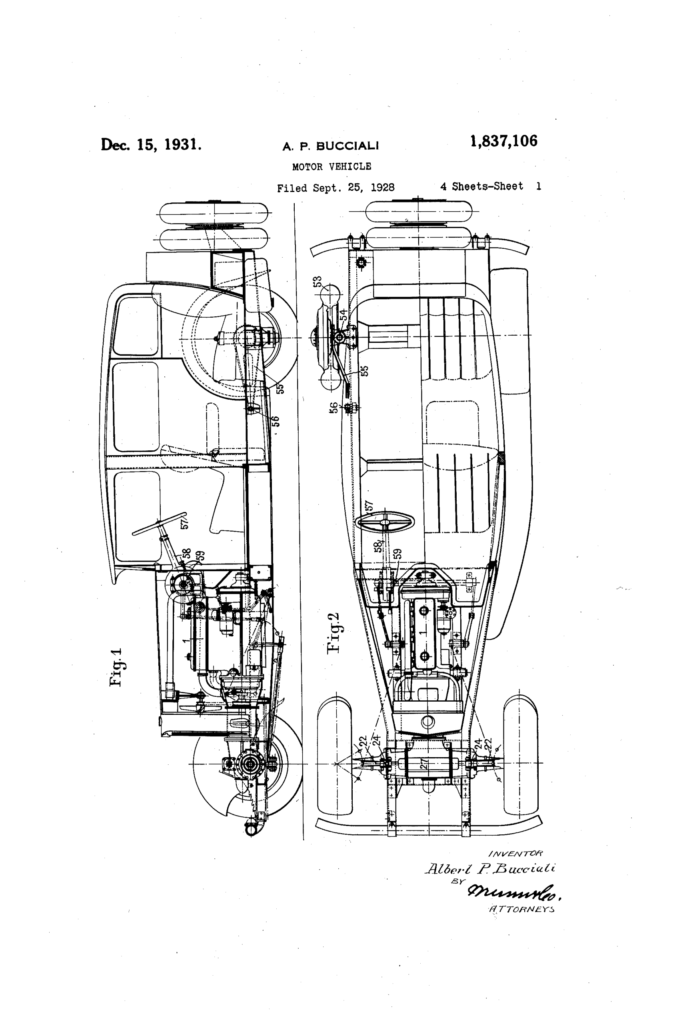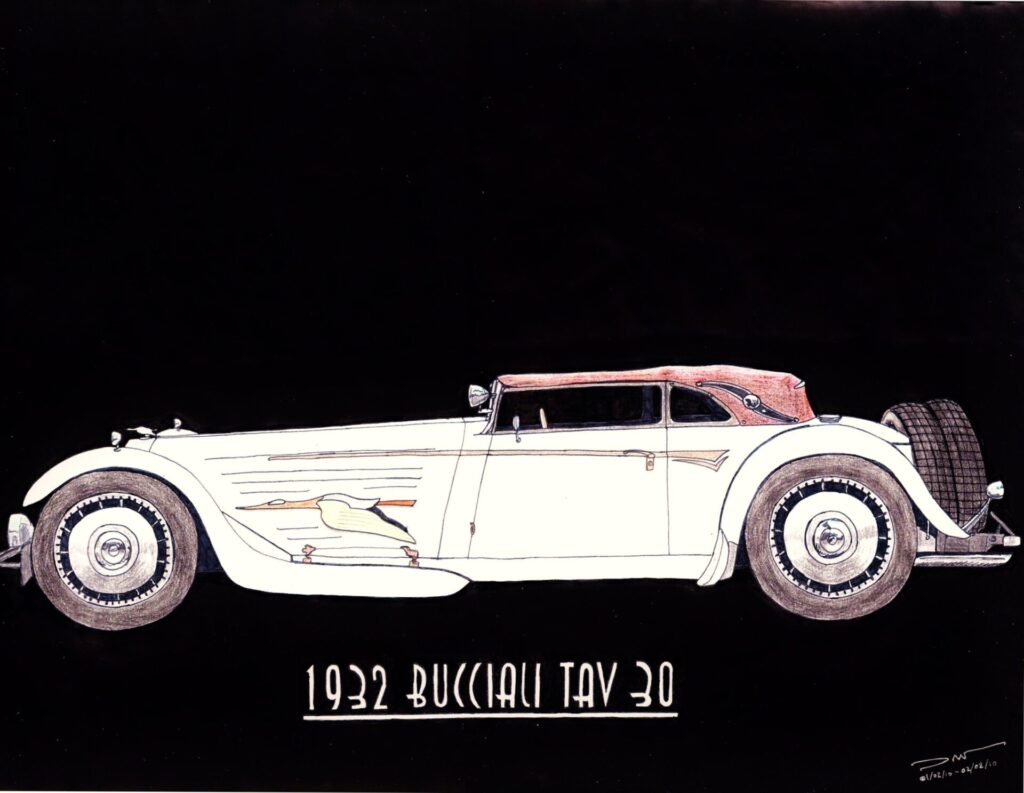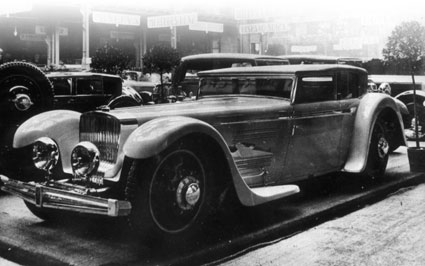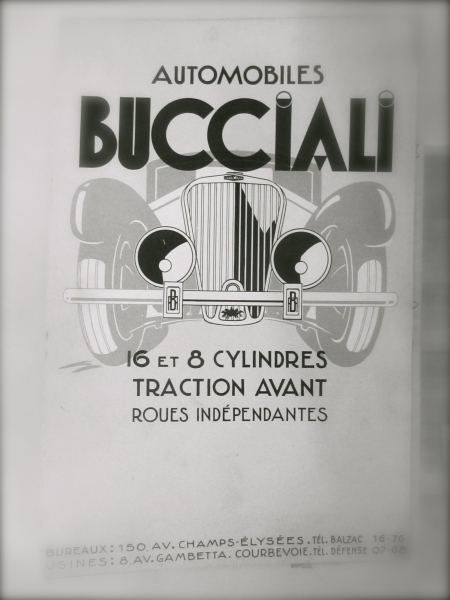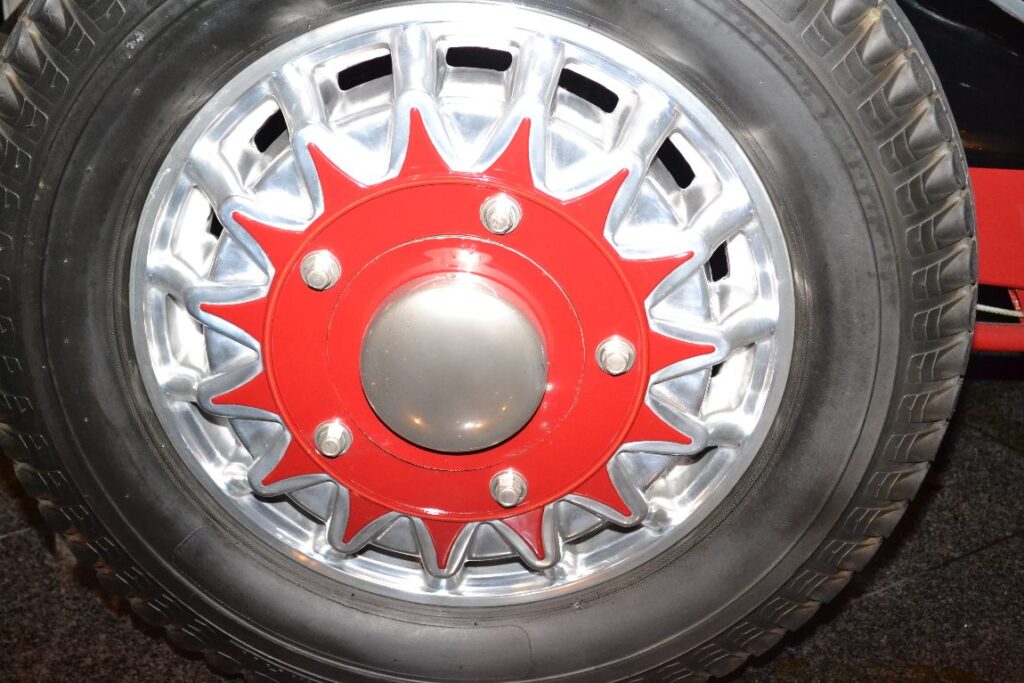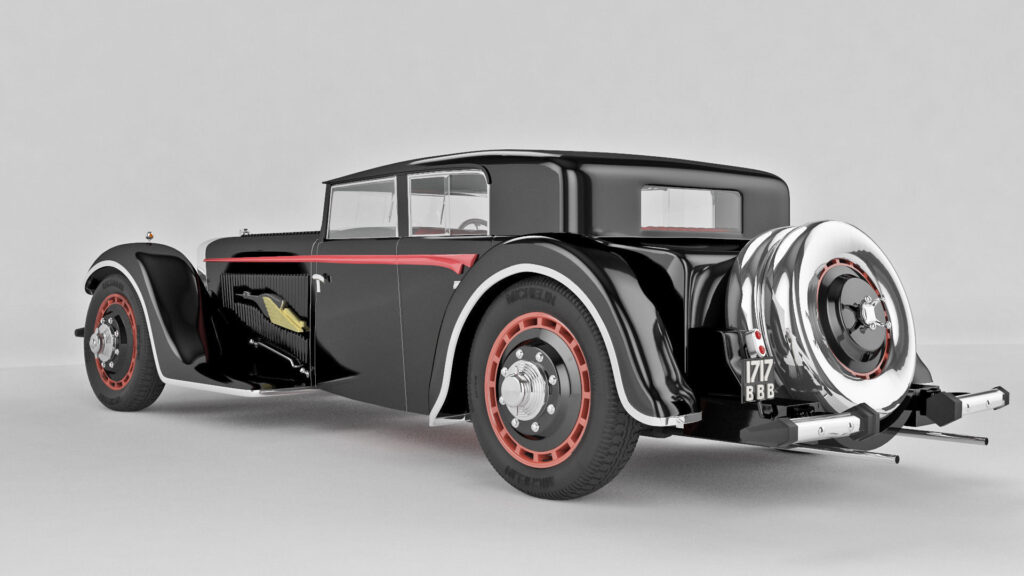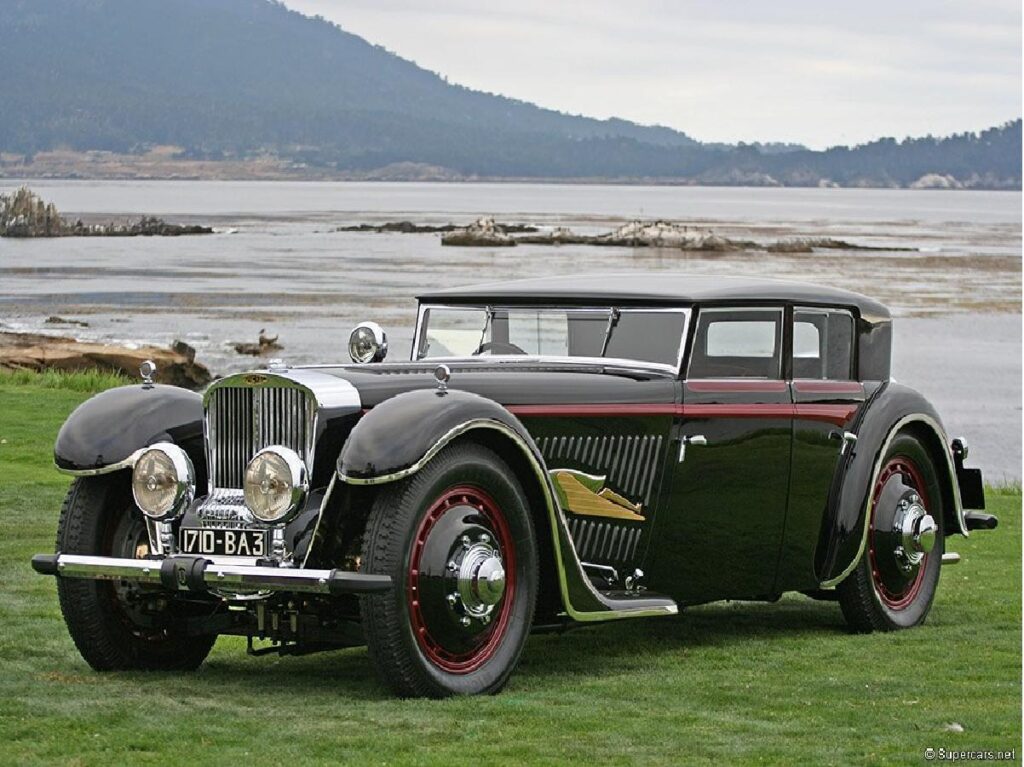Famous constructers: Story of Bucciali
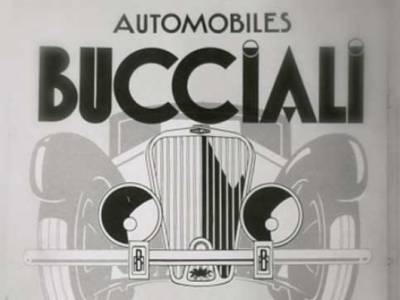
The driving on them was rarely seen, but still the photos of the French supersports Bucciali with the endless front bonnet which has entered since their inception in 1926, perhaps in all automotive encyclopaedias. These extreme machines were the work of two brothers, who their potentials customers, professional public and potential financiers with the taste, were supplying the imaginary vision.
The son of the Corsican organist and composer Angelo Bucciali (1887-1946) and his younger brother Paul-Albert (1889-1981) smelled the gasoline as amateur racers. Gradually they gained attention for their own designs, which they nicknamed by abbreviation of their surname – simply ”Buc”. In the family they originally called this name for the younger and more impulsive brother Paul-Albert, who already before the First World War earned a small fortune by building aircraft and aerobatic pilot career. At the front, which was for him a Sky, he served in the ”Stork squadron” (”Escadril des Cicognes”). From there came the later stylized form Stork taken on automobiles Bucciali.
As of 1920 the Bucciali built in the small factory in the town Courbevoie near Paris small sports cars, while bragged hundred units sold, the reality is probably moving around seventeen. Every piece was original and apparently none survived. The modern replica is on display at the Mullin Museum in Los Angeles. Just 90 years ago the Bucciali enrolled in automotive history with the first of their extravagant creations. In the years 1926-1932 they made six chassis, of which three have survived to this day. The most famous bears the stunning closed body of the specialist from Paris, Saoutchik and the car still attracts attention wherever it is exhibited. The first model with front-wheel drive (the French Traction Avant, like later by Citroen) was labeled “Bucciali TAV 1” and debuted at the Paris Motor Show in 1926. It was endowed with only four-cylinder engine mounted longitudinally, took rather all-wheel independent suspension. Neither, at that time, other fair exhibits – like the contemporary concepts and design studies – wasn’t unusual, that couldn’t travel by its own power even a meter. Next year, followed by even more impressive TAV 2 chassis with a wheelbase of 3300 mm and a six-cylinder by CIME, later on the American mass-produced Continental.
The younger straight-eight engine bore the same brand, built-in to type TAV 3. The torpedo body, the creation of the Labourdette studio, had to hide under the original assumptions, the discussed automatic transmission of French designer (and a friend of the brothers Bucciali’s) Sensaud Robert de Lavaud. Let’s remind that he wasn’t with his complicated mechanism finished even in 1934, when the machine supposed to deliver brilliance to already mentioned futuristic Citroën Traction Avant. With the atypical Bucciali vehicle, promising parameters and the main shapes, both of the brothers and their associate Joseph Ksandr went on the promotion tour in the United States, where in this incriminated year 1929 more than 80% of the world’s automobile production came from. There they reportedly drove over 10,000 kilometers. They were mainly interested in the prestigious, but that time already declining brand Peerless. At the end of the 1930, they returned back to the US and exhibited in New York and Chicago. Overseas the global economic crisis was already in full swing. It turned out that the greatest chance to survive had producers of the extremely cheap or completely exceptional vehicles. Bucciali therefore demonstrated chassis TAB 3 Double Huit sixteen-cylinder engine of its own design. At that time in the world only Marmon and Cadillac offered the V16. Also the low line of the cooler was breath taking and significantly long fenders and half meter diameter breaks drums protruding from the 24 inches rounds of the disc area. Roughly over the front axles was across located the stored transmission Bucciali, but the engine itself was just a model – although its creators even after many years argued that they sold three mobile 16-cylinder chassis. The only adorer of Bugatti cars and owner of pharmaceutical company, George Roure entrusted them money. Bucciali’s usually didn’t travel, but at the representative salon at Paris Champs Elysées No. 150, they made the proper fanfare. In 1931 was mentioned at the introduction the Saoutchik creation on the chassis being labeled as a TAV 30, but in reality modified on the three years older TAV 2. The sprung wheels with the coil springs were independently hung and at the bow was an amazing stork mascot.
The whole fortune of both of the brothers has been used on previous projects, moreover was a bad time and the crisis spilled over to France. Yet they found an enthusiastic partner, the owner of the coachbuilder in Angers Emile Guillet. They couldn’t compare with the Saoutchik fantasies, the sedan chassis TAV3 or a Roadster TAV8 didn’t work out for them either, the Peerless went bankrupt and from the possible lucrative transatlantic cooperation was abandoned.
Let’s return back to the ultimate creation TAV 8-32, equipped with the twin trapezoidal front axle with apparently very successful geometry. The transversely mounted gearbox should improve the traction by increasing the load on the drive wheels. Saoutchik offered to this chassis body called Golden Arrow (Flèche d’Or) and under the hood instead of chimeric six cylinder Bucciali or the previously used inline eight-cylinder Continental, they fitted with the reliable V12 Voisin, the quiet sleeve-valve engine. The rich pharmacist Roure paid for the chassis TAV 8-32 130,000 French Francs and Saoutchik charged him at the end of the April 1932 to the account 85,600. To drive nearly three-ton truck to which the bumps were transferred from the driven front wheels certainly wasn’t fun. At the Paris Salon in 1932 Buccialli exhibited both of the Saoutchik, the immobile convertible TAV30 and closed the Golden Arrow TAV 8-32. The then owner and finance provider of the company Roure, apparently from the Côte d’Azur came by its own and with a big relief, he sold the car to the banker De Rivaud.
In October 1932 Bucciali went bankrupt, soon after the coachbuilder Guillet ended too and the cabriolet from the Saoutchik headed to the scrap. Paul-Albert later worked on the race cars for Le Mans, but also the orders from the French army nourished him. He contributed on the development of the wood gas generators and electromagnetic transmission Cotal with the preselection.
The Roadster bodywork that was left from the chassis TAV 3, he edited and placed a six-cylinder engine of the French firm Mathis after a war. Along with the chassis TAV 3-16 and TAV 3 of this mix owned until 1960, when the cars from him along with tons of spare parts bought for a symbolic one Franc to Serge Pozzoli, who was working to build a car museum. However this ambitious project was abandoned. Therefore after 1969 the chassis with the sixteen-cylinder ended in Reno, Nevada by Bill Harrah, at that time the largest automobile collection in the world. Later, after the restoration went to Blackhawk Collection, where then was supplemented also Bucciali TAV 3. The most virtuosic fates had TAV 8-32 after the Voisin engine failure, the Saoutchik body of the 1935 ended at the chassis of the Bugatti 46, the frame been scrapped and a “hybrid” of the two French brands some American soldier after the war brought to USA from Europe. Another American, Ray Jones, bought on Bucciali what he could, especially the TAV 3 chassis and the engine with the front of the chassis TAV 8-32. According to the original drawings he built the frame, rear axle, dashboard etc. It took him 10 years. The Bucciali TAV 8-32 which was in progress, then owned by several owners, gradually accumulate replicas of the other components, including the body. The work was completed in 1997. Although the accomplishment wasn’t sold at the Rétromobile, then a year later headed to the collection of an unnamed European Collector.
Let’s summarize the fate of the six produced Bucciali:
- TAV 1 of 1926 probably never been driven and it has been scrapped (1940).
- TAV 2 / TAV 3/ TAV 30 the chassis was gradually revised with model of sixteen-cylinder, since 1985 is Blackhawk Museum in USA.
- TAV 2 / TAV 3 years from 1927/28, known as Mary, had replaced seven bodies, and since 1985 is also at Blackhawk.
- TAV 2 year 1928, later also referred as a TAV 15 or TAV 30 got the Labourdette body, which should relieve Saoutchik creations, but in 1933 the chassis was scrapped.
- TAV 5 from the year 1930 was probably never driven, even got a six cylinder compressor engine Mercedes-Benz. Paul-Albert Bucciali let it to be scrapped (1954).
- TAV 8-32 from the years of 1931/32 began with engine of Voisin V12 and Saoutchik body, after the series of renovations and extension has been completed in 1997 and from 1998 is in private European collection.
